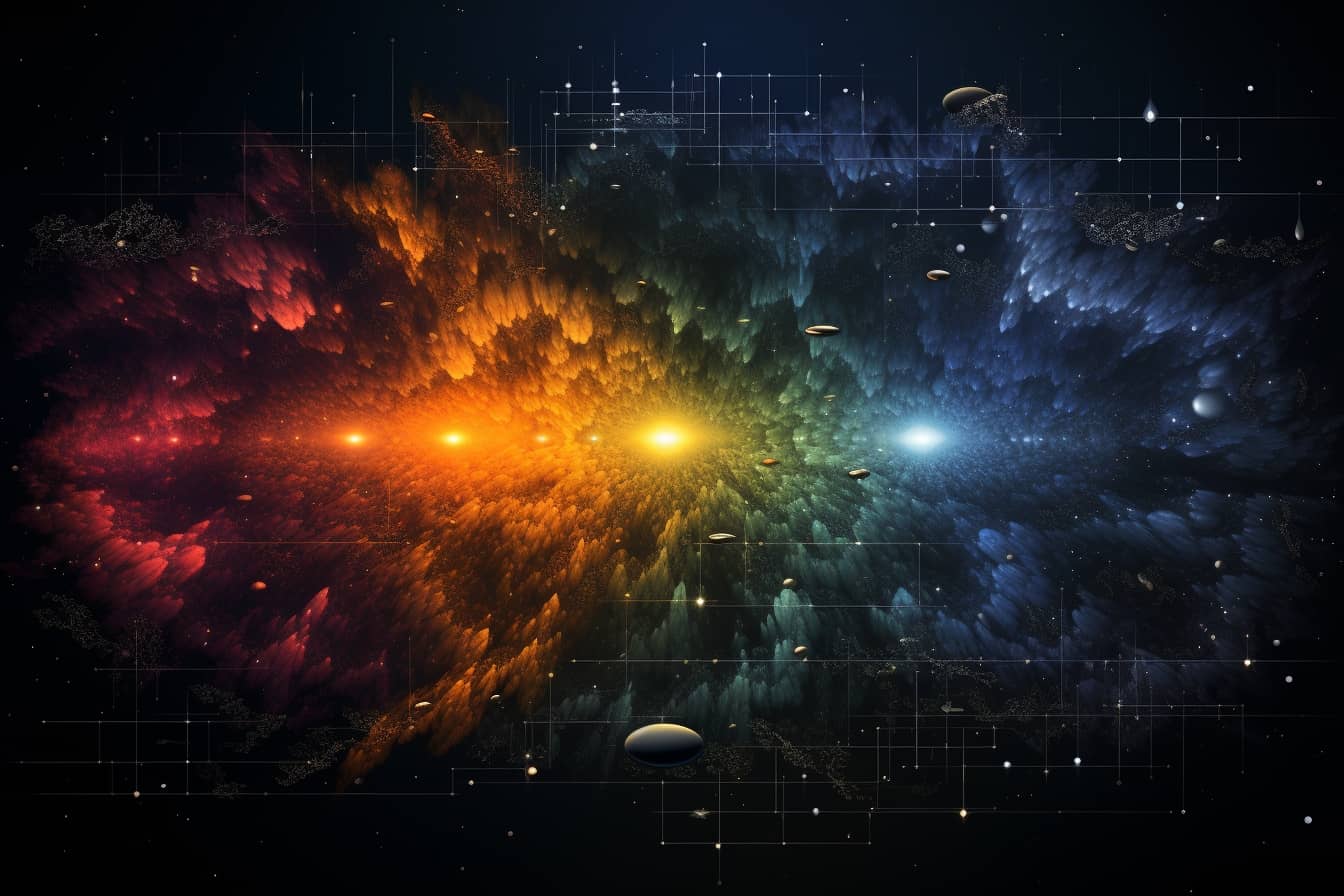In the vast and mysterious universe in which we live, matter, that which we can see and touch, represents only a small fraction of what really exists. Recent research conducted by Chiba University in Japan has brought to light surprising data: only 31% of the universe is made up of matter.
The discovery, based on the analysis of galaxy clusters and their density, challenges our previous knowledge and pushes us to reflect on the nature of the remaining 69%, known as dark matter.
The universe revealed: only a third is matter
In the vast cosmic theater, what we see represents only the tip of the iceberg. Most of the universe remains shrouded in mystery, hidden from our sight. But thanks to innovative methods and advanced technologies, we are starting to unlock these secrets.
Il Dr. Mohamed Abdullah of the National Research Institute of Astronomy and Geophysics-Egypt and the chiba university in Japan, explains to us that "baryonic" matter, the one that forms stars, galaxies, atoms and even life, represents only about 20% of total matter. The remaining 80%? It is the mysterious dark matter, which could be composed of as yet unknown subatomic particles.

How to measure the immeasurable?
Measuring the mass of the universe is no small task. The main challenge? Most matter is dark. Anatoly Klypin ofUniversity of Virginia points out that it is difficult to measure the mass of a galaxy cluster since most of the matter is dark.
However, researchers have found an ingenious way to overcome this obstacle. They used the number of galaxies in each cluster as an indirect indicator of its total mass. This method, known as the mass richness relation (MRR), relies on the fact that more massive clusters contain more galaxies.
Comparison with simulations
Using data from Sloan Digital Sky Survey, the team was able to compare the observed number and mass of galaxy clusters with predictions from numerical simulations. And the discovery was surprising: the universe consists of only 31% matter as we know it. This data agrees perfectly with the observations of cosmic microwave background (CMB) obtained from the Planck satellite.
Tomoaki Ishiyama of chiba university expresses the team's enthusiasm: “We have obtained the first measurement of the density of matter using the MRR, in perfect agreement with the CMB method of the Planck team”. This study demonstrates that cluster abundance is a valid technique for determining cosmological parameters.
The power of spectroscopy: matter... Of study
Another noteworthy aspect is the innovative use of spectroscopy to precisely determine the distance to each cluster and the actual member galaxies.
The article, published in The Astrophysical Journal (I link it here), not only demonstrates the power of the MRR technique, but also indicates how it can be applied to new datasets available from large and deep imaging and spectroscopic surveys of galaxies, such as those carried out with the Subaru Telescope, Dark Energy 0, Dark Energy Spectroscopic Instrument, Euclid Telescope, eROSITA Telescope and James Webb Space Telescope.
Who knows, maybe this new discovery will take us a step closer to understanding our place in the grand scheme of things.


